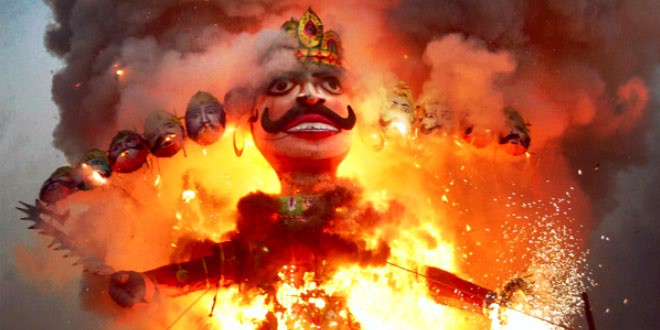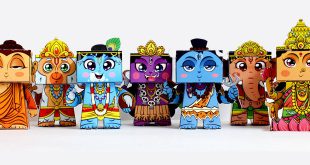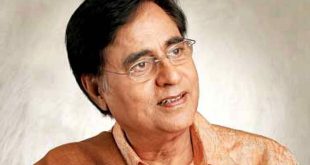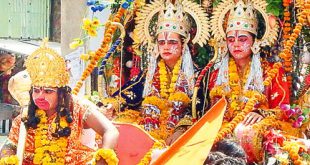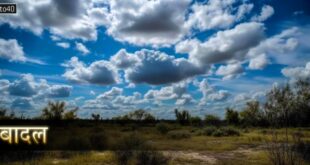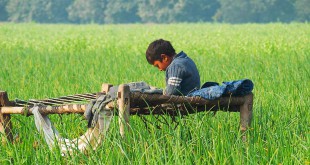दशहरा के त्यौहार पर हिंदी कविता – होगा तभी दशहरा
राजा एक महा-अभिमानी, काँपता जिससे कण-कण।
उस अभिमानी रावण ने था, सबको खूब सताया,
रामचन्द्र जब आये वन में, सीता को हर लाया।
झिलमिल झिलमिल सोने की, लंका पैरो पे झुकती,
और काल की गति भी भाई, उसके आगे रूकती।
सुन्दर थी लंका, लंका में सोना ही सोना था,
लेकिन पुण्य नहीं पापों का।
भरा हुआ दोना था, तभी राम आये बन्दर भालू की सेना लेकर,
साध निशाना सच्चाई का, तीर चलाया पैना।
लोभ पाप की लंका धूं-धूं जल कर राख हो गई,
दिए जले थे तब धरती पर, अनगिनत लाखों लाख।
इसलिए तो आज धूम है, रावण आज मरा था,
खाते शीश दस बारी-बारी, उतरा भार धरा का।
लेकिन सोचो, कोई रावण फिर छल ना कर पाये,
कोई अभिमानी न फिर से काला राज चलाये।
तब होगी सच्ची दीवाली, होगा तभी दशहरा,
जगमग – जगमग होगा तब, फिर सच्चाई का चेहरा।
∼ प्रकाश मनु
Significance of Celebrating Dussehra
Dus means ten and hara means defeat, Dussehra means defeat of 10 things. Dussehra is also known as Vijayadashami i.e. Vijay+Dashmi – victory over 10 vices. It is a well celebrated Hindu festival which signifies the victory of Lord Rama over Demon King Ravana, Goddess Durga over Demon Mahishasura, good over bad, and truth over lies. It is a national holiday in India. It is the 10th day of Navratri when Idol of Goddess Durga is submerged in the water body. It falls on the 10th day of the Shukla Paksha in the month of Ashvin i.e. month of September-October. Large fairs are held across the country where people come and enjoy to celebrate this occasion. Although it is celebrated across the country, it is vastly popular in North India.
In the night, large Paper and wood effigies of Ravana with ten heads are burnt in the open ground with bonfires and fireworks to reflect the removal of evil. The 10 heads of Ravana represents 10 vices namely ego, selfishness, over pride, lust, jealousy, greed, attraction, anger and injustice.
In other parts of the country, like Gujarat, men and women gather and dance whole night of the Navratri, this popular form of dance is called Garba. In South India, Dussehra festival of Mysore is well known for its style with a lot of pomp and show. Here mainly goddess Chamundeshwari is worshiped. Some communities celebrate it as Ashok Vijaya Dashmi. In Nepal, it is known as Dasain. Dussehra is also celebrated as Vishwakarma Divas, the National Labor Day of India.
 Kids Portal For Parents India Kids Network
Kids Portal For Parents India Kids Network
